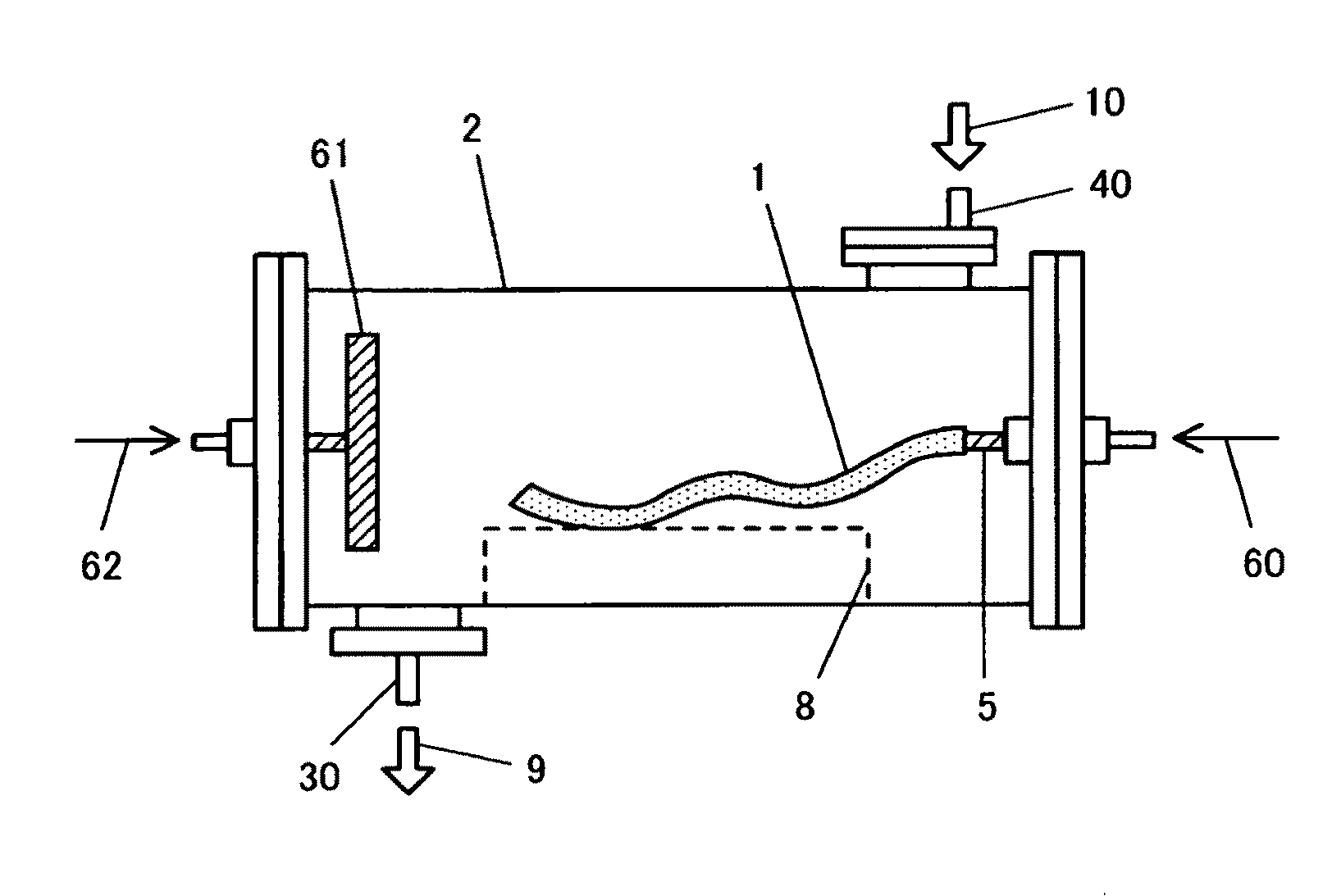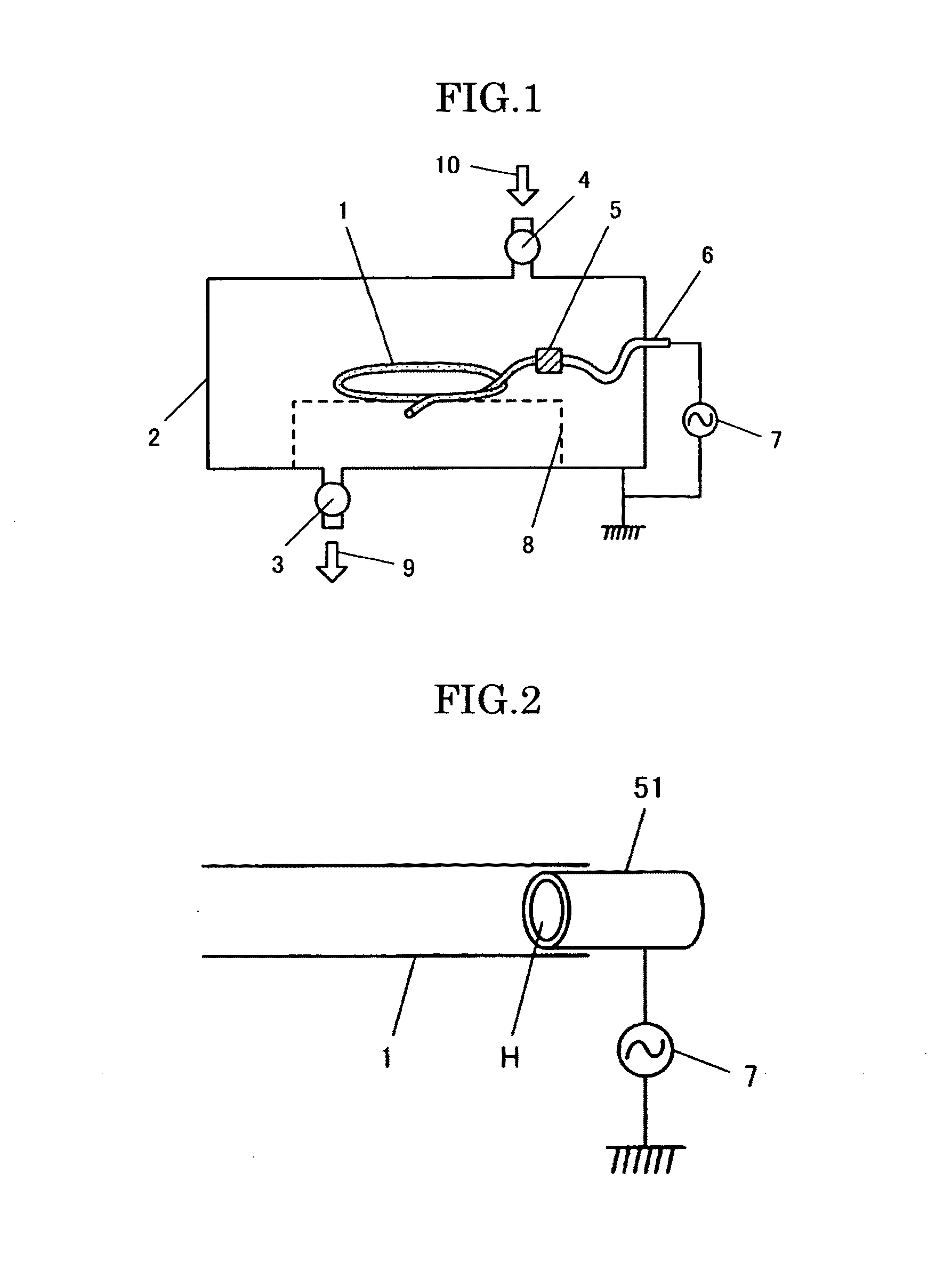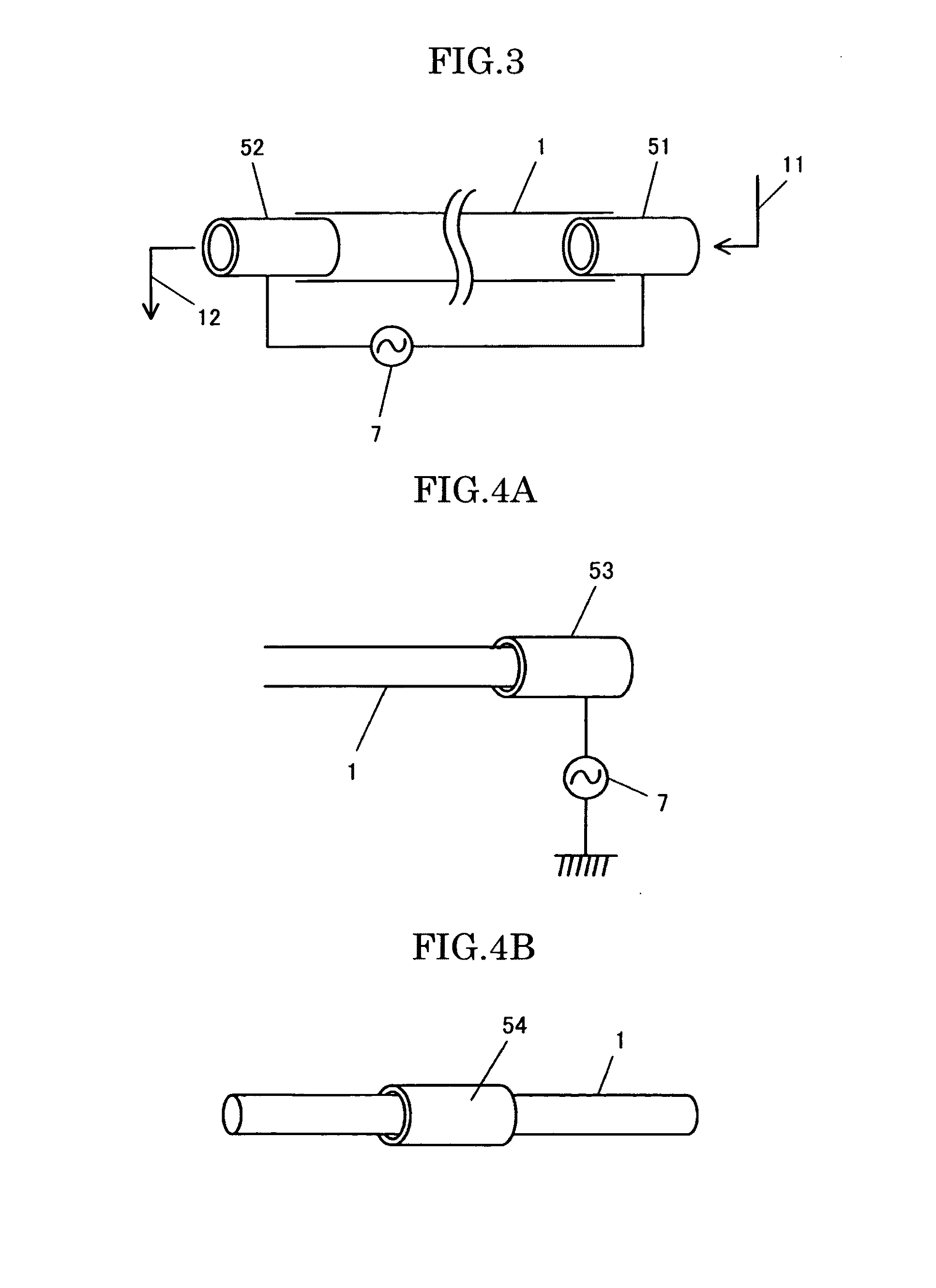Plasma sterilizing device and method
a sterilizing device and plasma technology, applied in the field of plasma sterilizing devices and methods, can solve the problems of low sterilization efficiency, material quality change, poisonous ethylene oxide and hydrogen peroxide, etc., and achieve the effect of effective sterilization process, efficient use, and effective decomposition and removal of bacteria
- Summary
- Abstract
- Description
- Claims
- Application Information
AI Technical Summary
Benefits of technology
Problems solved by technology
Method used
Image
Examples
embodiments
[0103]Long tubules to be sterilized (made of silicon rubber) having an inner diameter of 2 mm and 4 mm and a length of 50 cm were used, and experiments were carried out in the plasma sterilizing device in FIG. 1.
[0104]An electrode 5 was provided only at one end of the long tubule, and the cylindrical container 2 (made of stainless steel and having an inner diameter of 200 mm and a length of 500 mm) was used as a grounding electrode.
[0105]An oxygen gas was introduced into the container 2 and the pressure within the container 2 (outside the long tubule 1) was set within a range of 200 Pa to 340 Pa.
[0106]Next, an alternating current voltage of 4 kV to 6 kV having a frequency of 10 kHz and a pulse frequency of 10 pps was applied to the electrode 5, as shown in FIG. 6.
[0107]At this time, glow discharge could be confirmed only inside the long tubule. FIG. 9 shows the glow discharge generated inside the long tubule having an inner diameter of 2 mm. It is clear from the figure that plasma w...
PUM
| Property | Measurement | Unit |
|---|---|---|
| pressure | aaaaa | aaaaa |
| frequency | aaaaa | aaaaa |
| length | aaaaa | aaaaa |
Abstract
Description
Claims
Application Information
 Login to View More
Login to View More - R&D
- Intellectual Property
- Life Sciences
- Materials
- Tech Scout
- Unparalleled Data Quality
- Higher Quality Content
- 60% Fewer Hallucinations
Browse by: Latest US Patents, China's latest patents, Technical Efficacy Thesaurus, Application Domain, Technology Topic, Popular Technical Reports.
© 2025 PatSnap. All rights reserved.Legal|Privacy policy|Modern Slavery Act Transparency Statement|Sitemap|About US| Contact US: help@patsnap.com



